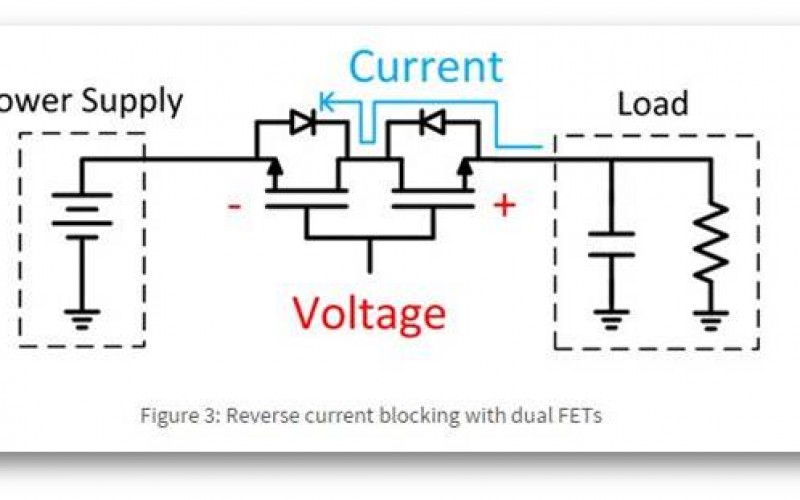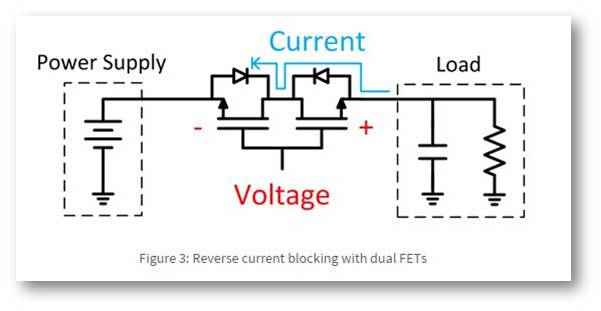
We all might have experienced the sting of burning silicon while working on electronics systems, that is one of the things that reverse current can do to your system. Reverse current is an event in which current travels in opposite direction than it should be moving through a system due to high reverse bias voltage i.e. output voltage greater than input voltage.
Causes
The common cause for reverse current, high reverse bias voltage, is having a higher voltage at the output than the input, inducing the current to travel in opposite direction from the intended direction.
It is shown in the below Figure 1.
Reasons for reverse current can be because suddenly input voltage becomes zero, leaving higher voltage on the output.
Method For Preventions
Protection necessitates keeping reverse current flow very low i.e. limiting reverse voltage. The two common ways are: Diode and FETs.
Diodes
Using diode is the simplest solution. Diodes are great for high voltage, low current applications. Basically diodes prevent reverse current flow in them thus by protecting the system. However, diode has forward voltage drop, which shortens battery life and limits Vcc by 0.6 to 0.8 V. For these reasons Schottky diode is a popular alternative. It has lower forward voltage drops, but are expensive and have higher reverse current leakage. The appropriate diode must be chosen according to the systems input ratings.
Figure 2 shows a diode to block reverse current.
FETs
FETs have low forward voltage drop and high current handling capabilities which is helpful to maintain low power dissipation. Comparing to the diode solution, there is a lower voltage drop from the power supply to the load.
Figure 3 shows a FET to block reverse current.
 These simple designing steps can help you reduce complications of reverse current in your designs. Reverse current is one of the most neglected factor while designing embedded circuits.
These simple designing steps can help you reduce complications of reverse current in your designs. Reverse current is one of the most neglected factor while designing embedded circuits.
Author: Praveen Gonsalves

